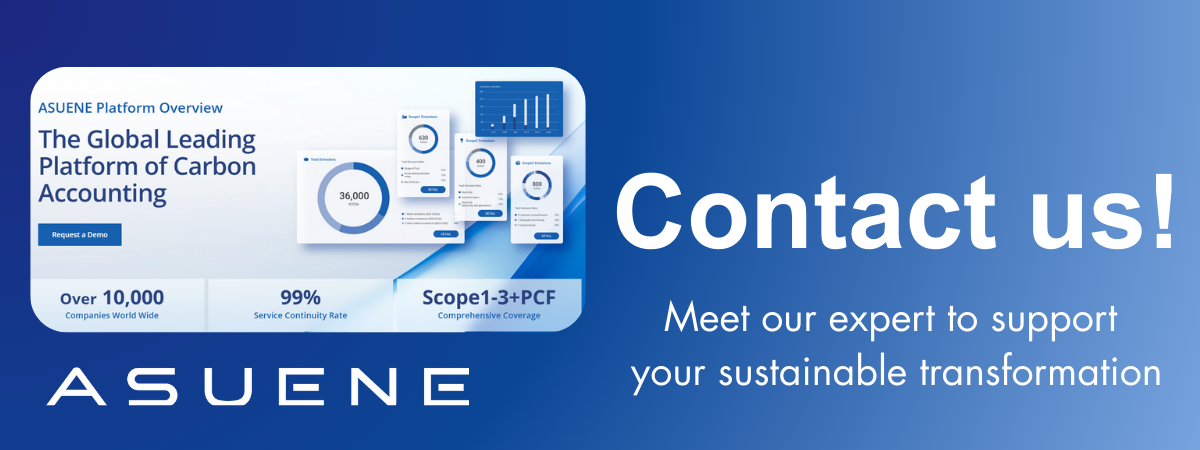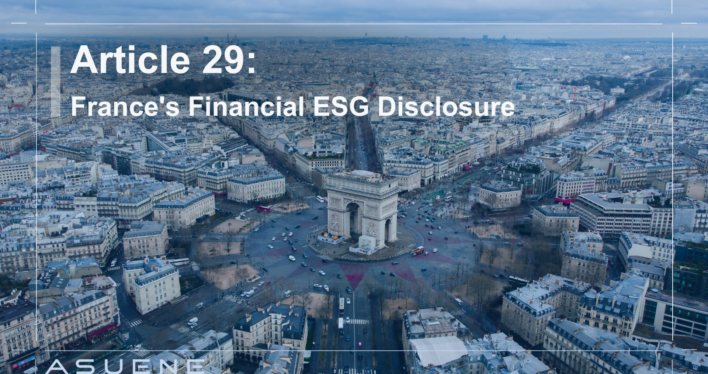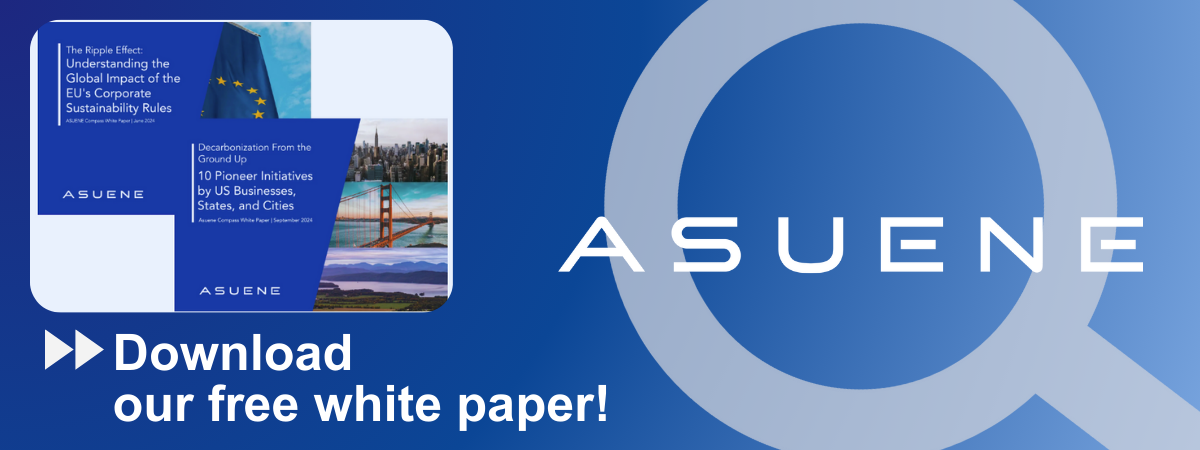- Article Summary
-
Introduction: France’s Push Toward Sustainable Finance
In recent years, climate policy has increasingly shaped the financial landscape across Europe. One of the most pivotal developments in this domain is France’s Energy-Climate Law, passed in 2019. Within this legislation, Article 29 stands out as a critical provision targeting institutional investors and financial actors. It mandates climate and ESG disclosures that align with international standards while setting additional requirements unique to France. The law underscores France’s ambition to become a global leader in sustainable finance and places financial institutions at the heart of its decarbonization and biodiversity strategies. With the convergence of national and EU-level regulations such as the SFDR and CSRD, understanding Article 29 is vital for financial institutions aiming to stay compliant and relevant in a rapidly evolving ESG environment.
Key Requirements of Article 29 for Financial Institutions
Article 29 applies to a broad set of financial actors, including asset managers, insurance companies, pension funds, and institutional investors operating in France. The law requires them to disclose detailed information on how they integrate ESG factors into their investment and risk management processes. These disclosures must include:
- Climate-related risks (both physical and transition)
- Biodiversity impacts and related metrics
- Strategies for alignment with the Paris Agreement
- ESG integration methodologies and performance metrics
Institutions must also provide information on:
- Contributions to climate goals
- Methodologies for assessing net-zero alignment
- Engagement strategies with portfolio companies
- Scenario analysis and forward-looking climate indicators
The law sets a structured timeline, beginning with disclosures in 2022 based on 2021 data. Updates and refinements are expected annually, with increasing granularity and alignment with evolving EU standards. Importantly, Article 29 also introduces specific biodiversity-related reporting obligations, which go beyond the EU SFDR and highlight France’s leadership in integrating nature-related financial risks.
| Year | Reporting Expectation | Description |
|---|---|---|
| 2021 | Preparatory Phase | Institutions begin ESG integration strategies and data collection aligned with Article 29 requirements |
| 2022 | First Mandatory Report | First disclosures based on 2021 data, covering climate risks, ESG strategies, and biodiversity metrics |
| 2023 | Enhanced Disclosure | More detailed scenario analysis, portfolio alignment, and biodiversity reporting required |
| 2024 | EU Alignment Phase | Disclosures must align with CSRD and EU Taxonomy developments |
| 2025+ | Continuous Refinement | Annual updates incorporating new metrics, regulatory guidance, and climate alignment tracking |

Article 29 in the European Context: SFDR, NFRD, and TCFD
While Article 29 is a national regulation, it is deeply interwoven with broader European and global sustainability frameworks. It mirrors the structure of the EU’s Sustainable Finance Disclosure Regulation (SFDR) but introduces more detailed requirements in certain areas. For instance, while both Article 29 and SFDR require ESG and climate risk disclosure, Article 29 emphasizes biodiversity metrics and Paris alignment methodologies, which are not as explicit in the SFDR.
The law also mandates alignment with the recommendations of the Task Force on Climate-related Financial Disclosures (TCFD). This includes governance structures for managing climate risk, integration into business strategy, risk management processes, and the use of specific metrics and targets. Additionally, as the EU moves forward with the Corporate Sustainability Reporting Directive (CSRD) and implementation of the EU Taxonomy, financial institutions must ensure that their Article 29 disclosures are compatible with these frameworks. In this way, Article 29 acts as both a bridge and a booster for European ESG integration.
| Framework | Geographic Scope | Focus Areas | Article 29 Alignment |
| SFDR | EU-wide | ESG risk disclosures, Principal Adverse Impacts (PAI) | Partial (Article 29 includes additional biodiversity and climate targets) |
| TCFD | Global | Governance, strategy, risk, metrics | Full alignment required |
| CSRD | EU-wide | ESG disclosures, double materiality | Must be compatible |
Challenges and Implications for Financial Institutions
Implementing Article 29 presents both operational and strategic challenges. One major difficulty lies in the availability and quality of ESG data, particularly concerning Scope 3 emissions and biodiversity impacts. Financial institutions must develop robust data collection and verification systems to meet reporting expectations. This often requires upgrading internal IT systems, hiring ESG expertise, and collaborating with data providers and portfolio companies.
Conducting scenario analysis to assess portfolio exposure to climate risks is another demanding area, requiring the use of advanced climate models and assumptions. The law also encourages transparency in portfolio temperature scores, which many institutions find difficult to estimate due to varying methodologies. Despite these hurdles, compliance with Article 29 also offers significant opportunities. Institutions that move beyond minimum requirements can strengthen their ESG brand, attract ESG-conscious investors, and enhance long-term risk management. The shift also fosters more meaningful shareholder engagement, pushing companies toward better sustainability performance.
| Top Challenges in Article 29 Compliance | Percentage of Respondents (Survey) |
| ESG data availability and quality | 72% |
| Scenario analysis complexity | 61% |
| Internal governance and expertise gaps | 54% |
| Alignment with EU regulations | 47% |
Conclusion: From Compliance to Climate Leadership
Article 29 of France’s Energy-Climate Law is more than just a regulatory requirement. It is a catalyst for deeper ESG integration and climate-conscious investing across the French financial sector. As global investors and regulators increasingly demand transparency and action, Article 29 equips financial institutions with a framework to meet these expectations. Forward-looking firms are using this regulation as a foundation to embed sustainability into their core strategies, not merely to satisfy compliance but to gain competitive advantage and resilience.
By proactively investing in ESG data systems, enhancing scenario planning, and aligning with international standards, financial institutions in France can lead the way in sustainable finance. In doing so, they support national climate objectives, contribute to global biodiversity conservation, and position themselves as pioneers in the financial transition to a low-carbon, nature-positive economy.
Why Work with ASUENE Inc.?
Asuene is a key player in carbon accounting, offering a comprehensive platform that measures, reduces, and reports emissions. Asuene serves over 10,000 clients worldwide, providing an all-in-one solution that integrates GHG accounting, ESG supply chain management, a Carbon Credit exchange platform, and third-party verification.
ASUENE supports companies in achieving net-zero goals through advanced technology, consulting services, and an extensive network.


